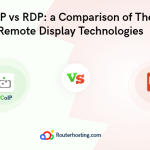As technology continues to evolve at a rapid pace, it has transformed almost every aspect of daily life. From how we travel to how we interact with others, the modern world is more interconnected than ever. Devices and systems are seamlessly linked, providing unprecedented convenience, efficiency, and connectivity. As we embrace these advancements, we must consider their impact on society, from personal safety and home security to larger systems such as emergency services and the prison system. In this article, we explore how a hyper-connected world is changing our lifestyle and how these changes extend to broader societal systems.

Changing Travel and Transportation
One of the most visible effects of advanced technology is in the realm of travel and transportation. Ride-sharing services, navigation apps, and electric vehicles are just a few examples of how tech has revolutionized the way we move. GPS technology enables real-time navigation, allowing drivers to avoid traffic and find the fastest routes, while ride-sharing apps such as Uber and Lyft have made commuting more convenient and affordable.
Public transportation has benefited from technological advancements, with many cities implementing smart transportation systems. These systems monitor traffic flow and adjust schedules in real-time to optimize the movement of passengers. Autonomous vehicles are rapidly becoming a reality, promising to change the way we think about commuting and road safety. While these innovations offer significant benefits, they also raise questions about data privacy, security, and the potential impact on jobs in the transportation industry.
Enhancing Home Safety with Smart Technology
As we move further into a hyper-connected world, our homes are becoming increasingly intelligent. Smart home devices like security cameras, smart locks, and voice-controlled assistants are designed to make our lives easier and safer. These devices can be remotely controlled, allowing homeowners to monitor their property, adjust settings, and even lock doors from anywhere in the world. With the ability to automate tasks such as lighting and temperature control, smart homes provide an unmatched level of convenience.
The interconnected nature of these devices presents potential vulnerabilities. Cybersecurity risks are a significant concern, as hackers could gain access to personal data or control over security systems. In response, companies are working to develop more secure technologies, but consumers must remain vigilant about the potential risks. Despite these concerns, the convenience and peace of mind provided by smart home devices continue to make them a popular choice for homeowners.
The Impact on Emergency Services
The integration of advanced technology has had a profound effect on emergency services, such as fire departments, ambulances, and police forces. Emergency responders now have access to sophisticated communication systems that enable them to coordinate more effectively during crises. GPS tracking and real-time data sharing allow ambulances to reach their destinations faster, while fire departments can monitor fire conditions remotely through sensors and drones. This technology has significantly improved response times and outcomes in critical situations.
Predictive analytics is increasingly being used to forecast where emergencies might occur, enabling agencies to allocate resources more effectively. Police forces are using surveillance technology and data analysis to prevent crime and respond to incidents more efficiently. Social media and mobile apps allow citizens to report emergencies directly to authorities, creating a more direct line of communication between the public and emergency services.
While these advancements have undoubtedly improved emergency responses, they raise privacy concerns. The widespread use of surveillance and data collection can be seen as invasive, with some questioning the balance between safety and individual freedoms. Striking the right balance will be crucial as technology continues to play a larger role in public safety.
Changes in the Prison System: Insights from Jails
As technology advances, it is not only our daily lives that are impacted, but also larger institutional systems such as the criminal justice system. The rise of surveillance, monitoring systems, and digital records has transformed how prisons and jails operate. The staff at Riverside County Jails report that the implementation of digital systems has significantly improved inmate management, monitoring, and rehabilitation efforts. One notable advancement is the use of electronic monitoring systems that allow authorities to track parolees or those on house arrest, providing real-time updates on their whereabouts. These technologies help ensure compliance with the law and contribute to public safety.
The integration of technology in the prison system extends to rehabilitation efforts. Virtual programs and online education are helping incarcerated individuals acquire new skills and knowledge, potentially lowering recidivism rates. By offering access to digital resources, correctional facilities are creating opportunities for inmates to reintegrate into society successfully. There are ongoing discussions about the ethical implications of using such technology, including concerns about surveillance and its potential to exacerbate social inequality.
Transforming Work and Communication
The digital revolution has completely transformed how we work and communicate. Remote work, video conferencing, and instant messaging have become the norm, eliminating the need for traditional office spaces for many people. This shift has made it easier for individuals to collaborate across time zones and geographic locations, creating a more flexible and accessible work environment.
The rise of artificial intelligence (AI) and automation is changing the workforce. Jobs that once required human labor are increasingly being taken over by machines, creating new opportunities while eliminating traditional roles. While this technology can improve productivity, it also raises questions about the future of work and the skills needed to stay relevant in an increasingly automated world.
The way we communicate has evolved with the advent of social media, messaging apps, and collaborative tools. These technologies have made it easier for individuals to stay connected, share ideas, and collaborate on projects. The over-reliance on digital communication can have negative effects, such as reduced face-to-face interactions and the spread of misinformation. As we become more digitally connected, we must find ways to strike a balance between convenience and human connection.
Social and Cultural Shifts
The hyper-connected world has brought about significant changes in social and cultural dynamics. Social media platforms have altered how we form relationships and express ourselves. We now have the ability to connect with people from around the world instantly, sharing our experiences and opinions with a global audience.
This shift has led to greater cultural exchange but has brought about challenges such as cyberbullying, online harassment, and the erosion of privacy. The constant availability of information can lead to information overload, where individuals feel overwhelmed by the sheer volume of content they encounter daily. Navigating this new social landscape requires individuals to be more mindful of their digital footprints and the impact their online actions can have on their personal lives.
Privacy Concerns and Data Security
As technology continues to advance, the issue of privacy and data security becomes even more pressing. The widespread collection of personal data by companies and government agencies raises concerns about how this information is used and who has access to it. From smart home devices to online shopping, our every move is tracked, analyzed, and often monetized.
This has led to increased public awareness about the importance of securing personal information. Companies are facing more pressure to implement robust data protection measures, while consumers are becoming more cautious about sharing their data. Striking a balance between convenience and privacy will be one of the key challenges in the coming years as we continue to live in a hyper-connected world.

The integration of technology in various sectors, including law enforcement and corrections, has brought about profound changes in how we interact with the world. As technology continues to shape society, it is important to consider the broader implications, from privacy and security to the ethical concerns surrounding its use in systems like the prison system.
As we navigate this hyper-connected world, the challenge will be to ensure that technology is used responsibly, balancing its benefits with the potential risks to privacy, safety, and personal freedom. The future is digital, but it will require careful thought and regulation to ensure that it serves society in the best possible way.













